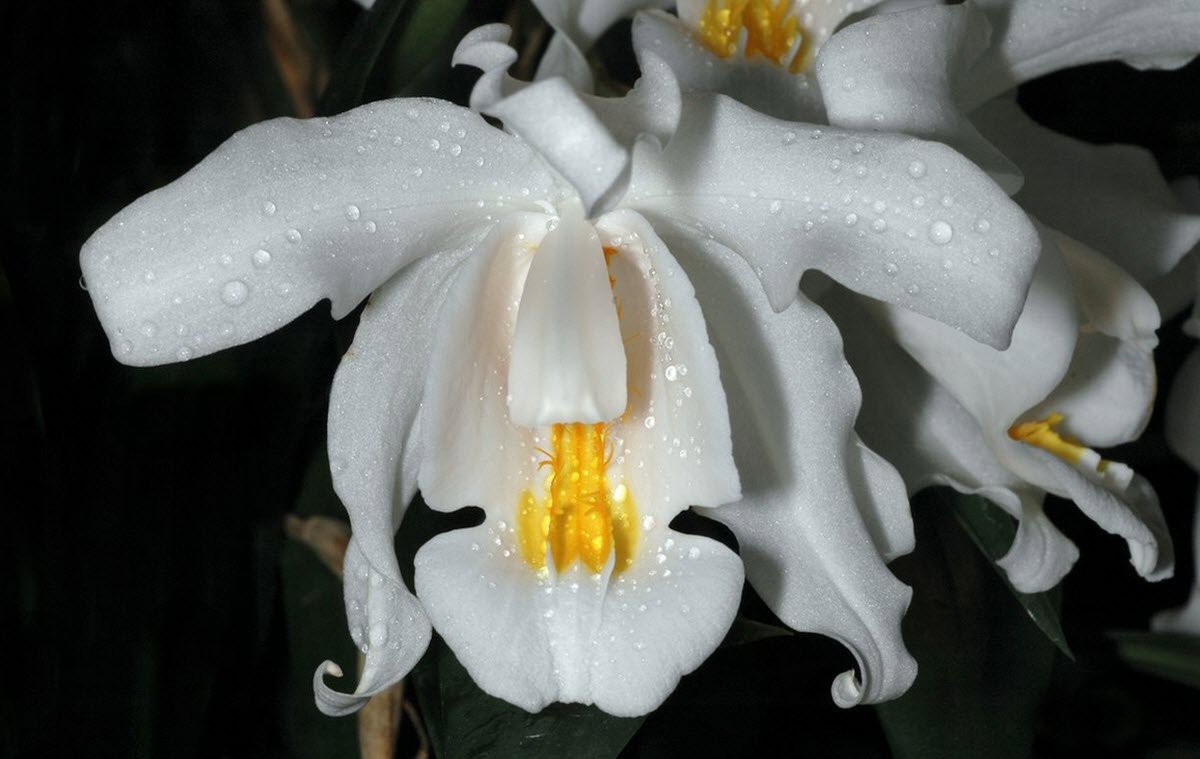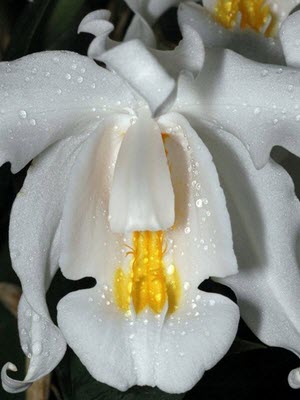Coelogyne Orchid Care
Contents
The Coelogyne orchids are found across India, China, Indonesia and the Fiji Islands. The main centres for this genus are located in the Himalayas and on Borneo and Sumatra. Coelogyne orchids are not among the most commonly kept orchids so you might not find them in your local flower shop. One of the most well-known members of this group is the hybrid Coelogyne ‘South Carolina’ (C. pandurata x C. Burfordiense). This hybrid is commonly referred to as the Black Orchid since it has a black lip with an intricate pattern. Among the Coelogyne species, the typical colour is white, sometimes with shades of green, brown or peach.
Coelogyne orchids can be found in warm topical lowland forests as well as forests located high in the mountains, and the exact region will naturally play an essential role when it comes to proper Coelogyne orchid care. Some species will for instance require cool or even cold temperatures to flower, while others are used to fairly warm conditions.
Many, but not all, Coelogyne orchids needs a resting period each year. In order to carry out correct Coelogyne orchid care you need to find out the situation for your particular species.
Coelogyne cristata, Coelogyne ochracaea and Coelogyne pandurata will for instance need full rest, while Coelogyne massangeana and Coelogyne mooreana only needs partial rest. The tree first ones hail from environments with cool temperatures, while the second two live in intermediate conditions.
 Coelogyne cristata – picture by Eric
Coelogyne cristata – picture by EricWatering
How to water your Coelogyne orchids depend large on whether they need full rest or only partial rest during the resting season. For most species, the resting season takes place between late October and late March. During this period, your Coelogyne orchids should be watered sparingly and some species should not be watered at all. (This will also depend on the air humidity in the cool room where you have placed your orchids for their resting period.)
During the growth season, i.e. from late March to late October, Coelogyne orchids need a lot of water and should be watered once a week or every 10th day depending on the temperature. A high temperature will increase the need for water. Start watering your Coelogyne orchids when the new growth is at least ½ inch (slightly over 1 cm) high.
Nutrients
Coelogyne orchids are moderate feeders that will appreciate fertilizers from April to September. You can use ordinary general purpose plant food if you mix it to ¼ of the normal strength and flush the pot well every fourth week with water only to remove excess nutrients and deposited salts. From late August to late September you should instead use a higher potash fertilizer since this will make it easier for the bulbs from this year to harden and develop more and larger flowers for the coming winter or spring (depending on species).
Temperature
A majority of the Coelogyne orchids are used to cool growing conditions since they are native to the cool mountains of India and the Himalayas, but some prefer intermediate conditions instead. There recommended temperature range for Coelogyne orchids is 40-80 degrees F (8-25 degrees C).
Light
Coelogyne orchids thrive when the light levels are high since this makes it possible for them to store a lot of energy in their pseudobulbs. Without sufficient light, it can be impossible for the orchid to grow well formed and compact. You should however protect your Coelogyne orchid from strong sunlight if you place it close to the glass since its leaves might be burned. You can for instance add a mesh curtain to make the light somewhat milder.
Potting medium
The recommended potting medium for a Coelogyne orchid is medium grade compost. Make sure that the potting medium is well draining, since a soggy medium can lead to root destruction for Coelogyne orchids.
Repotting a Coelogyne orchid
You can repot your Coelogyne orchid in April when the blossoming is over, or allow the orchid to grow into a large plant and only repot it every second or third year.
Coelogyne Arter
Coelogyne orchid trivia!
Coelogyne orchid trivia # 1: Coelogyne orchid flowers will normally emit a sweet scent, since they need to attract pollinating insects such as beetles, wasps and bees.
Coelogyne orchid trivia # 2: The name Coelogyne is derived from the Greek words koilos and gyne. Koilos means hollow and gyne means woman. The name alludes to the concave stigma found in these orchids.
Coelogyne orchid trivia # 3: The orchids known as Necklace Orchids belong to this genus. Necklace Orchids have long, pendant inflorescences with a rich profusion of flowers.
